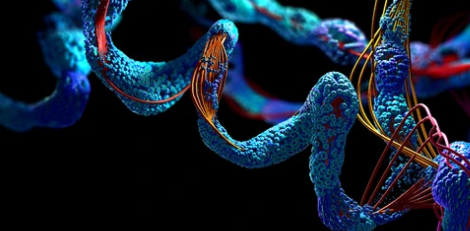Venom Peptide Extraction
Animal venom is a complex arsenal of chemical weapons. Most venoms are rich in biologically active peptides, which have the potential to be used as research tools, drug leaders and drugs. Peptide drugs are receiving more and more attention. Whether for peptide synthesis or separation from natural products, almost all crude peptide mixtures are quite complex and require purification. In recent years, technological advances in analytical methods have played a role in promoting peptidomic research and the application of peptides as emerging therapeutic drugs. The use of advanced instruments and analytical methods can effectively improve the sensitivity and resolution of the venom peptide extraction process, and shorten the running time. These advantages all help us save a lot of time in the research process.

Creative Proteomics provides the peptide extraction method which can significantly improve the purity and recovery rate of the products, and can more clearly distinguish the target peptide from the contaminants formed during the synthesis and cleavage process, thereby making the separation and purification process easier.
Due to the different characteristics of different venom peptides, there are many options for separation techniques available. Although reversed-phase chromatography is currently a very widely used peptide separation mode, it is more efficient to use alternative methods such as ion exchange chromatography or size exclusion chromatography to separate certain peptides. These alternative techniques can also be combined with reversed-phase chromatography to develop a two-step separation scheme dedicated to difficult samples.
High Performance Liquid Chromatography (HPLC) Method
The emergence of HPLC provides a favorable method for the separation of peptides. Under suitable chromatographic conditions, not only can the separation of venom peptides be completed in a short time, but more importantly, HPLC can complete the large-scale preparation of biologically active peptides. Finding the best conditions for the separation and preparation of venom peptides, maintaining the activity of the peptides, choosing the stationary phase material and the type of eluent are essential for the separation effect.
Reversed Phase Chromatography (RP-HPLC) Method
Reversed-phase high performance liquid chromatography is a liquid chromatography system composed of a non-polar stationary phase and a polar mobile phase. Reversed-phase chromatography is widely used in the separation of many types of compounds due to its reproducibility and wide applicability, including the separation of venom peptides.
Ion Exchange Chromatography
The chromatographic method that uses ion exchange resin or chemically bonded ion exchanger as the stationary phase and uses the difference in ion exchange capacity or selectivity coefficient of the separated components to achieve separation is called ion exchange chromatography. According to the different charge signs of exchangeable ions, it can be divided into cation exchange chromatography and anion exchange chromatography.
Size Exclusion Chromatography (SEC)
This separation technology is based on molecular size for chromatographic separation, rather than chemical characteristics such as molecular charge or polarity. SEC is a low-resolution technique that uses an isocratic method and does not need to be balanced between runs. The amount of sample loaded on the column depends on the sample volume and concentration, and both factors affect the resolution.
Creative Proteomics can help you complete a series of services from venom gland isolation to nucleic acid extraction, and help you obtain high-quality venom and related products for follow-up research.
Please contact us for more information.
For research use only. Not intended for any clinical use.

